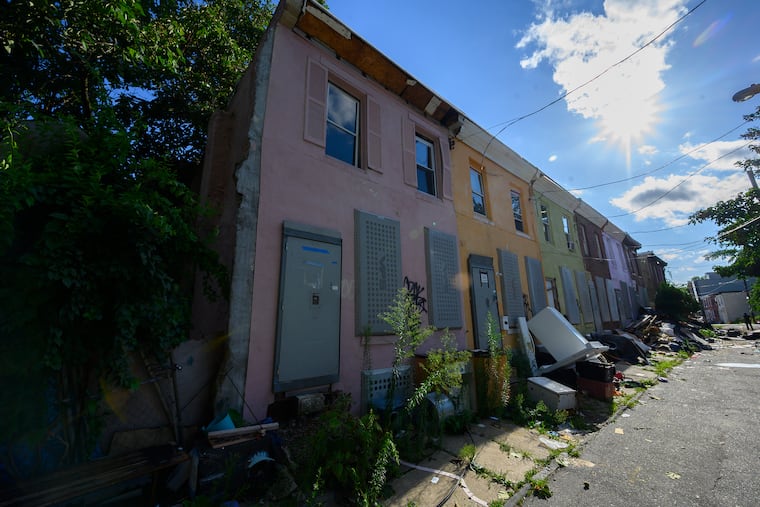Philly’s housing insecurity crisis needs long-term solutions | Opinion
Fair housing should remain at the center of the city agenda during and after the pandemic.

Housing insecurity continues to grow as fallout from the COVID-19 pandemic compounds it. In Philadelphia — which has seen more than 30,000 coronavirus cases and 1,900 deaths — the pandemic has left many households uncertain that they can pay rent.
But this uncertainty is not new. Census data shows that rents were already unaffordable for half of renters in Philadelphia before COVID-19. Rent is traditionally considered unaffordable when it consumes more than 30% of a household’s monthly income, which can leave residents unable to pay for necessities like medical costs or child care.
Prior to the pandemic, Philadelphia was laying the groundwork to support low-income, cost-burdened renters. The city’s Affirmatively Further Fair Housing (AFFH) plan in 2016 aimed to address long-standing segregation and discrimination, while the shallow rent subsidy pilot announced in early 2020 provides monthly vouchers up to $300 to reduce cost burdens in subsidized housing.
Despite these efforts to support residents, the last couple of months have shown that Philly needs more. And the disproportionate impact of COVID-19 on Black communities makes it impossible for even the most naive to continue to ignore racial discrimination in housing.
» READ MORE: Evicted without warning | Editorial
In Philly, where 52% of Black households rent and about 46% of coronavirus cases have been in the Black community, revisiting the AFFH plan and developing additional subsidy programs is critical to dismantle racial injustices and protect at-risk residents — especially since the Trump administration recently repealed the AFFH rule after years of refusing to enforce it.
Philadelphia is not alone in this work. Households across Pennsylvania are facing similar housing predicaments, as nearly two million Pennsylvanians (30% of the workforce) have filed for unemployment benefits since mid-March. Any programs developed to tackle this crisis should take into account that the current housing crisis is, in part, a result of three key statewide trends we identified in a comprehensive housing study for the Pennsylvania Housing Finance Agency. All three hit Black households hardest:
Rentership is increasing across rural and urban counties. In Philadelphia, rentership has reached its highest point since the 1930s, while throughout Pennsylvania, nearly all net new households since 2000 have been renters. Although rentership has increased across demographic groups, it remains starkly unequal by race. In Philly, only 35% of white non-Hispanic households rent, compared with 52% of Black households.
» READ MORE: Philadelphia Housing Authority is failing unhoused city residents | Opinion
Renters are paying more with less. Over 80,000 Philadelphia households now spend more than half of every income on rent. Rent in Philadelphia has increased by about $175 per month since 2000 (adjusting for inflation), while renters’ income has decreased by about $66 per month. Many of the most rent-burdened households include Black Philadelphians, who are three times more likely to live below the poverty line than whites.
The national housing safety net is eroded. Federal housing-related money in Philadelphia has been slashed by 50% — $55 million per year — since 2003. Meanwhile, the city’s public housing stock has shrunk by almost 4,700 units since 2000. The housing voucher waitlist has been closed since 2010. Without financial support, housing agencies are making dire trade-offs.
Unaffordable rents, a tsunami of layoffs largely in the service industries where many low-income renters were employed, and the vanishing housing safety net created a perfect storm in which low-income, and particularly Black, renters have nowhere to turn.
Pennsylvania and the city of Philadelphia are starting to address these realities. Gov. Tom Wolf’s suspension on evictions in Pennsylvania has been extended until Aug. 31, and Philadelphia City Council has passed further protections for the city’s renters, including mandatory mediation prior to eviction and preventing late fees or interest on back due rent. But these actions don’t solve issues around evictions going forward.
» READ MORE: Once-homeless Philly families are squatting in PHA houses. The agency wants them out.
The city of Philadelphia was one of the first in the country to develop an emergency rental assistance program. We at the University of Pennsylvania’s Housing Initiative (HIP) provided guidance to the city, and have helped others across the country develop crucial local rent relief programs.
Still, the complexities of creating these programs amid the pandemic, and ensuring they reach the most vulnerable residents, cannot be overlooked. This is why fair housing should remain at the center of the city of Philadelphia’s agenda after the pandemic.
» HELP US REPORT: Are you a health care worker, medical provider, government worker, patient, frontline worker or other expert? We want to hear from you.
Local efforts alone will not be enough. Issues around housing affordability in Philadelphia, much like the rest of Pennsylvania and the country, predate COVID-19 and represent a structural problem that stems from consistently insufficient federal support for housing. Moving forward, the federal government must make the housing safety net a permanent, national priority — not a crisis response left to cash-strapped localities.
Claudia Aiken is the director of the Housing Initiative at Penn, where Sydney Goldstein is data director and Vincent Reina, assistant professor in the department of city and regional planning at the University of Pennsylvania, is faculty director.